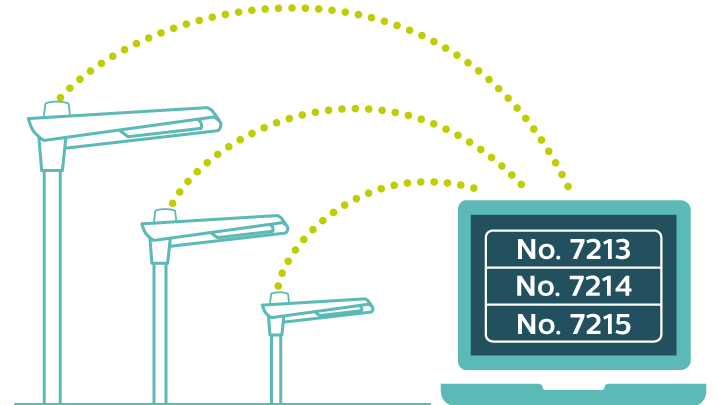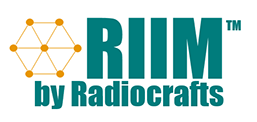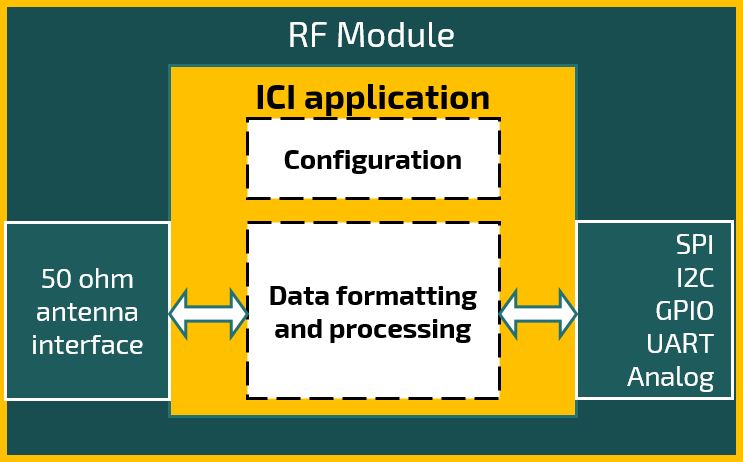Street Lights. They are a part of our everyday life, so much so, that we don’t even notice or acknowledge them sometimes. The only two things most people know about street lights is that during the night they light our sidewalks and roads and during the day they are shut off and unused. We may not look at or notice streetlights in our daily endeavors, however, as innovation speeds up, smart cities rise, and the growing need for energy efficient solutions increases, new technologies are enabling street lights to look at us and notice our movements and location. As we will present in this blog, street lights will play an essential role in creating smarter and more efficient cities.

Modern street lighting systems are being asked to do more than ever before. In addition to fulfilling their primary purpose of casting light onto dark roadways, parking areas, and public spaces, these lighting systems are increasingly evaluated for how well they reduce energy consumption, improve safety for both pedestrians and drivers, and serve as the foundation for a range of Internet of Things applications, but how can a simple street light achieve all this?
In this blog post we will show you what an efficient smart street lighting system looks like, and then we will present Radiocrafts’ newest product line, RIIM™ (Radiocrafts Industrial IP Mesh), as an effective solution for street lighting projects.
What Does An Efficient Smart Street Lighting System Look Like?
A smart street light system incorporates a cluster of streetlight lamps that can communicate with each other and provide lighting data to a local concentrator. The concentrator manages and transmits the relevant data to a secure server that captures the data and presents it in a web-browser dashboard.

A smart street lighting system also incorporates two-way communication which is the icing to the systems’ cake. It allows facility managers to remotely control street lights while keeping track of electrical power consumption in the lamps and in the driving circuits. Monitored street light networks help reduce maintenance costs as each and every lamp has a unique ID and can be pinpointed. The lamp status is monitored, therefore, if a street lamp happens to break, fall, or malfunction in any way, efficient, cost-effective and timely maintenance can be scheduled.
Even more impressively, if the night is brightly moon lit, for example, smart street lighting also assures reduced energy use by dimming or brightening the lights remotely. This can be done according to weather conditions as well, like fog or rain. An efficient collection of data is guaranteed as well, which city planners can use to expand light systems as their cities grow.
The basic component of a smart street lighting system is the intelligent lamppost, which is made of the three following components:
1. LED or HID lamps with the highest efficiency.
2. IoT-based communication to create digitally monitored, secure, and reliable network.
3. Addition of various smart sensors to monitor weather conditions, lamppost inclination, air pollution, and more.
 LED/HID lamps – Intelligent street lighting has to assure specific values of luminance, dimness, uniformity, and glare according to the road type in order to guarantee maximum visual safety to drivers and pedestrians. For this purpose, high performance luminous sources, such as High Intensity Discharge (HID) lamps and LEDs lamps, are used. These efficient lighting products also have increased lamp lifetimes and decreased energy consumption compared to traditional lights. The true intelligence of these lamp solutions is based on a digital approach where a microcontroller handles all the functions needed to have an effective and well-functioning lamp, while at the same time, managing all the data for implementing a smart street lighting network.
LED/HID lamps – Intelligent street lighting has to assure specific values of luminance, dimness, uniformity, and glare according to the road type in order to guarantee maximum visual safety to drivers and pedestrians. For this purpose, high performance luminous sources, such as High Intensity Discharge (HID) lamps and LEDs lamps, are used. These efficient lighting products also have increased lamp lifetimes and decreased energy consumption compared to traditional lights. The true intelligence of these lamp solutions is based on a digital approach where a microcontroller handles all the functions needed to have an effective and well-functioning lamp, while at the same time, managing all the data for implementing a smart street lighting network.
IoT-based communication – Networked street lighting systems can be managed through several proven communication standards. The communication is bi-directional, and the monitored system can send and receive information and commands to and from the lamp. The way a facility manager decides on, for example, how much to dim a lamp, depends on an abundance of information such as, weather conditions, lamp inclination, whether there are people in the near vicinity or not, road conditions, time of day, and more. This information can be collected on a cluster basis and sent to a central service center, where the data is monitored and actions are taken.
Smart Sensors – As previously mentioned, smart sensors can be used to detect real-time changes in information such as lamp inclination, weather conditions, air pollution, availability of natural light and more. This information can enhance road safety and reduce costs in maintenance.
Now that we know what an efficient street lighting system looks like, and how important it is in the grand scheme of enabling smart cities, what contributions is Radiocrafts making in this market?
RIIM (Radiocrafts Industrial IP Mesh) – An Effective Solution For Smart Street Lighting
Radiocrafts’ has acknowledged that networked street lighting is a major aspect in enabling the rise of smart cities. Therefore, we have jumped head first into this newfound market with our latest product line called RIIM by Radiocrafts. Despite being in the pre-launch phase with RIIM, Radiocrafts has already generated interest for RIIM in the smart street lighting market. Radiocrafts has a “teaching customer” with a sizeable street lighting project almost ready for release.
 A main requirement for an effective street lighting model is to have an effective wireless RF device which can reliably send data within the infrastructure. The main requirements on the RF connection side are that the device must support long range and cover long “pearl of strings” networks, and can be deployed quickly while requiring low maintenance. RIIM is the perfect solution for such an application. So, what is RIIM and why is it so useful for street lighting applications?
A main requirement for an effective street lighting model is to have an effective wireless RF device which can reliably send data within the infrastructure. The main requirements on the RF connection side are that the device must support long range and cover long “pearl of strings” networks, and can be deployed quickly while requiring low maintenance. RIIM is the perfect solution for such an application. So, what is RIIM and why is it so useful for street lighting applications?
RIIM by Radiocrafts is an Industrial IoT wireless IP mesh network completely embedded in a module and developed for you to easily create your own industrial grade access network with direct IP connectivity. It supports 2-way symmetrical communication which is, as we mentioned previously, the icing on the cake for a smart street lighting system. Read more about it here.
RIIM by Radiocrafts supports long range and long “pearl of strings” networks. RIIM’s range in urban environments can reach up to 700 meters which provides plenty of margin for the most challenging street lighting applications. Additionally, it supports 29 mesh hops which means that RIIM can cover a whopping area of up to 40 by 40 kilometres squared.

This IP mesh solution has an impressively short development time. RIIM is based on the IPM module which includes all the critical components for a complete wireless IP mesh, one of which is, Radiocrafts’ ICI framework. With Radiocrafts’ ICI Framework, you can quickly and easily create a smart autonomous network sensor node which can read and manage any sensor you can think of, with a level of abstraction so high that you can program a complex data processing application in less than 100 lines of high-level C-code with no need for knowledge of low-level programming. ICI is completely embedded in the RF module meaning there is no need for supporting circuitry. Read more about ICI and its vast capabilities here.
All the customer has to do is pick the sensor chip and units he wants to control, design the child node box mechanics, design his/her ICI application in high level C-programming, then connect the network to the internet via a Border Router, and DONE! Creating a smart autonomous network has never been so easy with ICI! The installation is completely automatic and the network is self-healing and self-optimizing so it requires no setup at installation, it is a plug-and-play solution ensuring quick deployment and low maintenance requirements.
The Radiocrafts IPM module with ICI support is also Over-The-Air (OTA) upgradable to remain future-proofed. This means that the user can update the user defined ICI firmware when the network is deployed and in full operation, so new sensors/controllers can be added when the need arises.
The ICI “limitations” are really just defined by the designer’s creativity!
Furthermore, each node in RIIM has its own IP address and is connected via CoAP. This means that a Cloud application can talk directly to an individual node without a complex data or address translation in a gateway. This also means that end to end security is very simple and is supported via DTLS in RIIM. You can read more about RIIM here.
What To Take Away From This?
Cities are growing and becoming “smarter”, the world is becoming more city-centric, and people are recognizing the increasing need to adapt to become environmentally efficient, and smart street lighting plays a major part in this shift. As cities evolve, companies need to continuously innovate and adapt our technologies to suit the current and future requirements in smart street lighting. Part of this adaptation comes in creating new and efficient models for street lighting which take the entire infrastructure into account from the physical lamp to the IoT-based communication within the network. Radiocrafts has also joined in on this effort to improve street lighting systems with our very own new product line, RIIM.
So, if you are in the smart street lighting business, you might want to consider RIIM for your projects.

